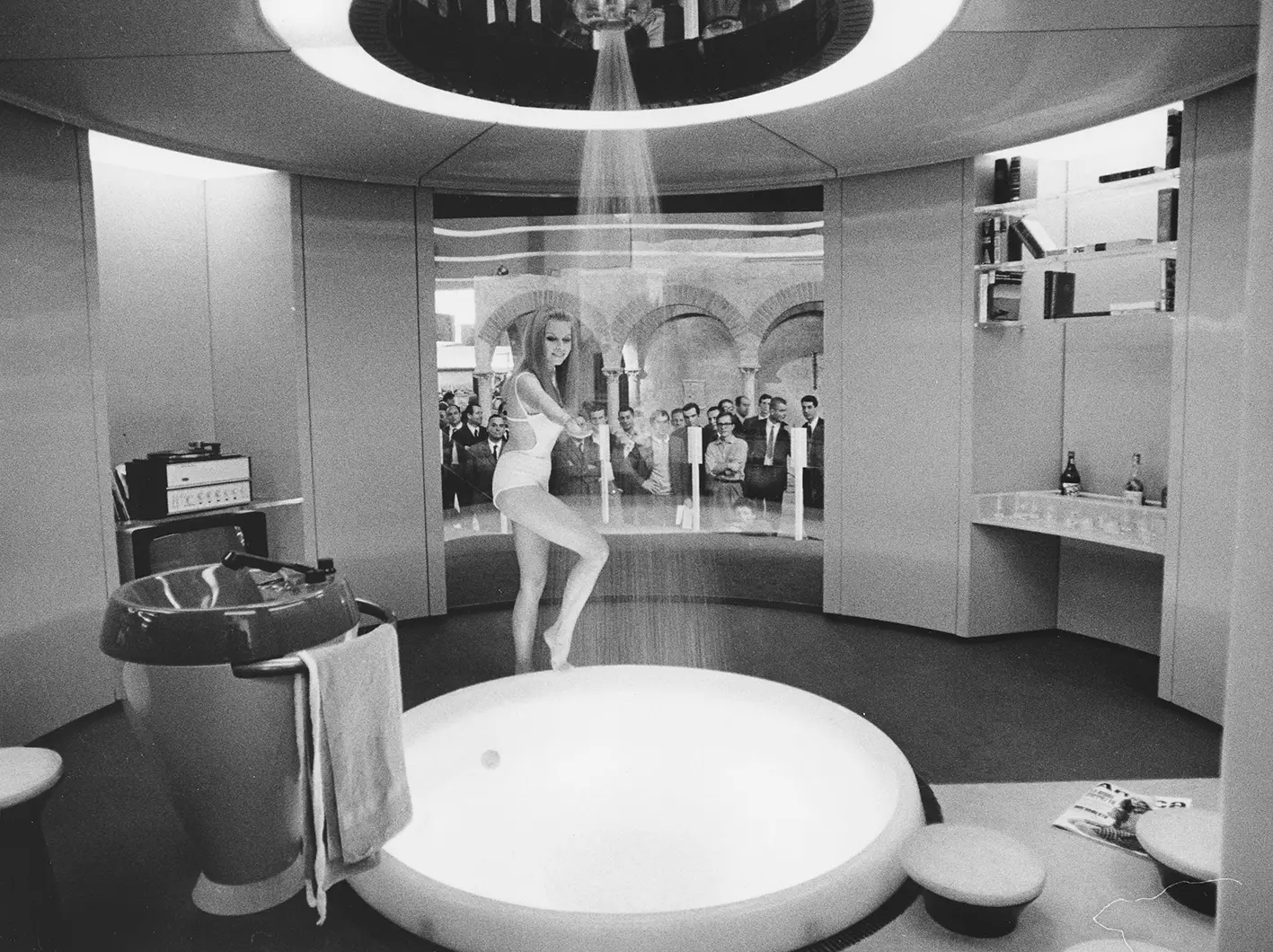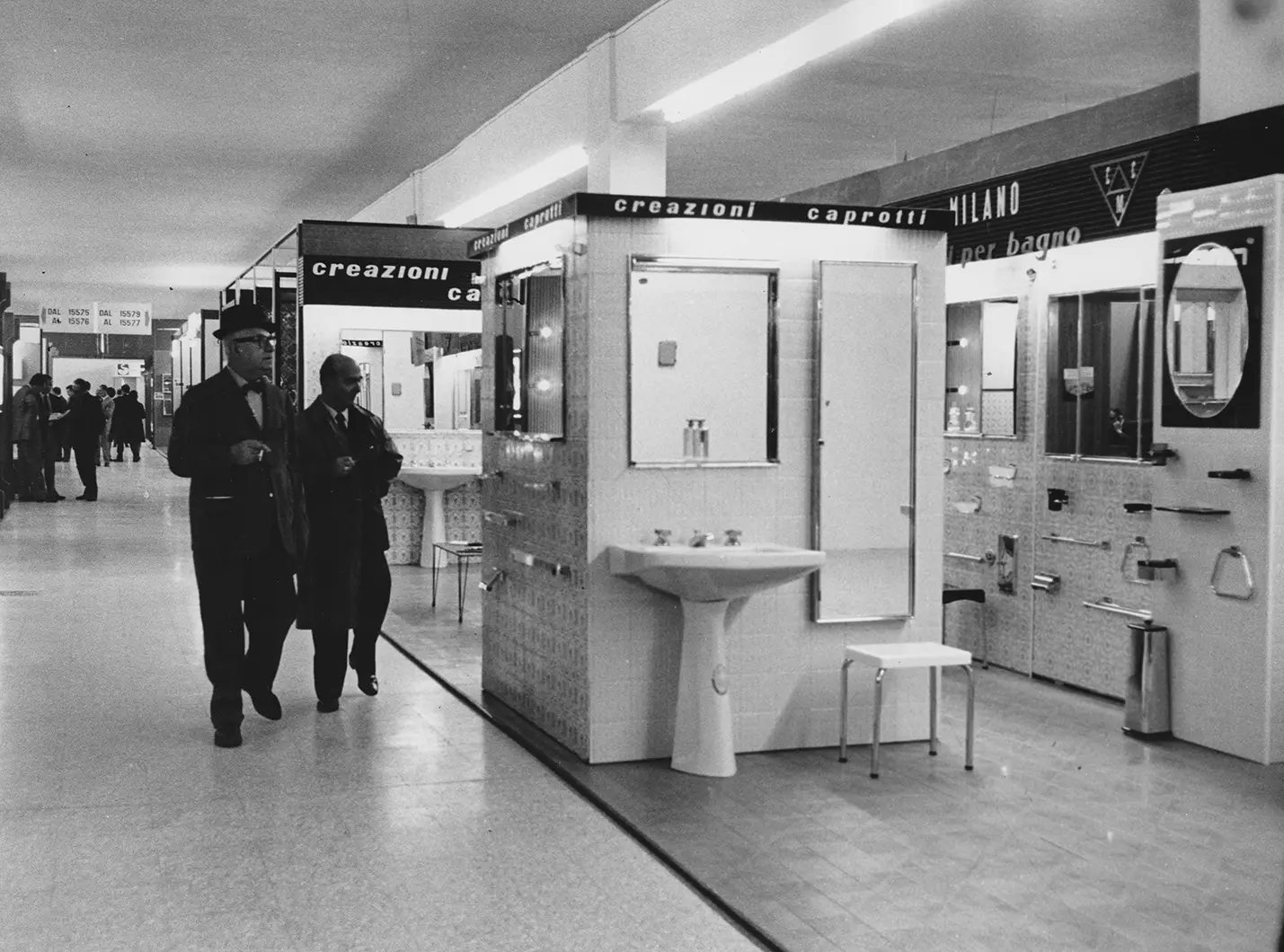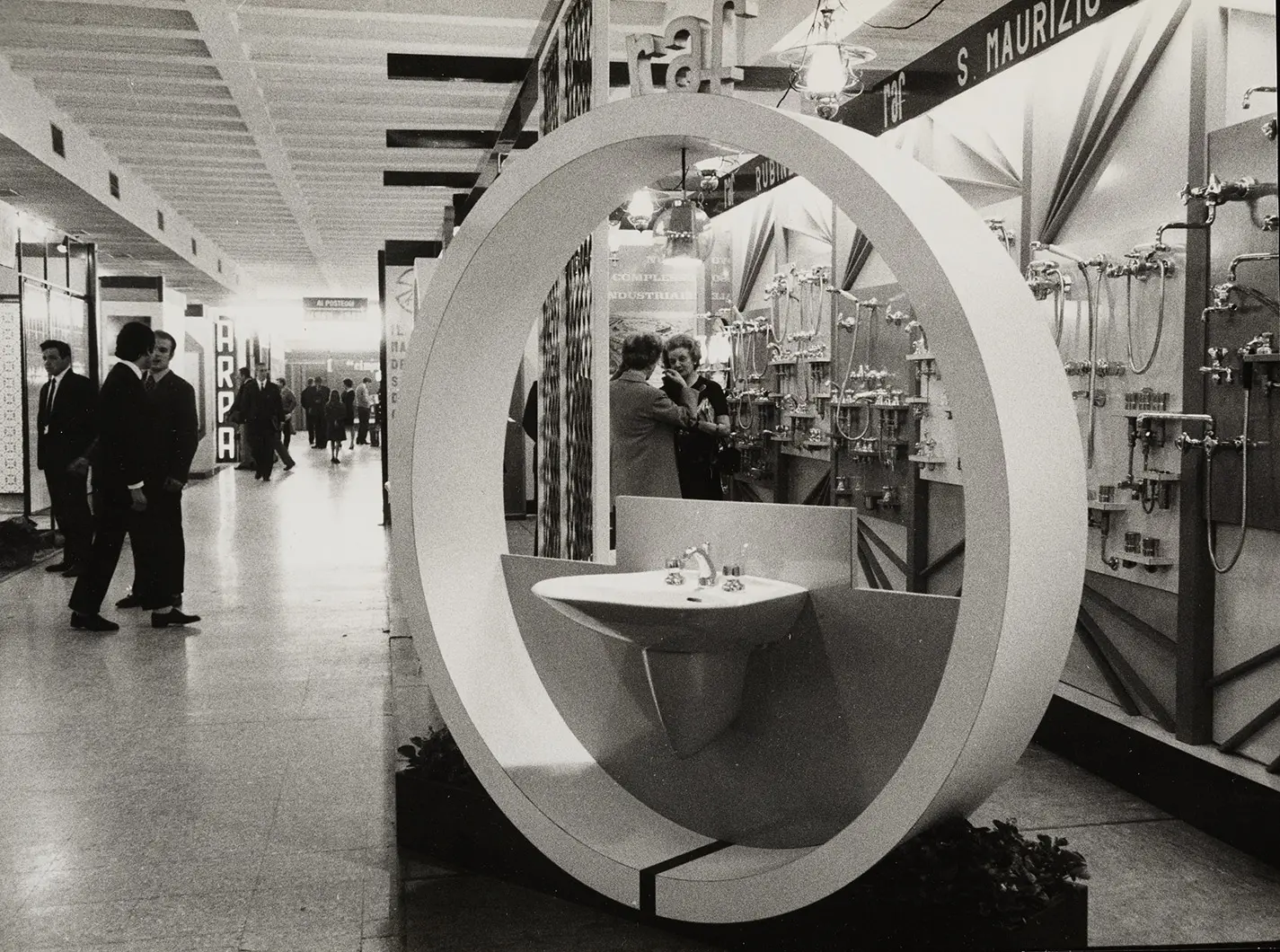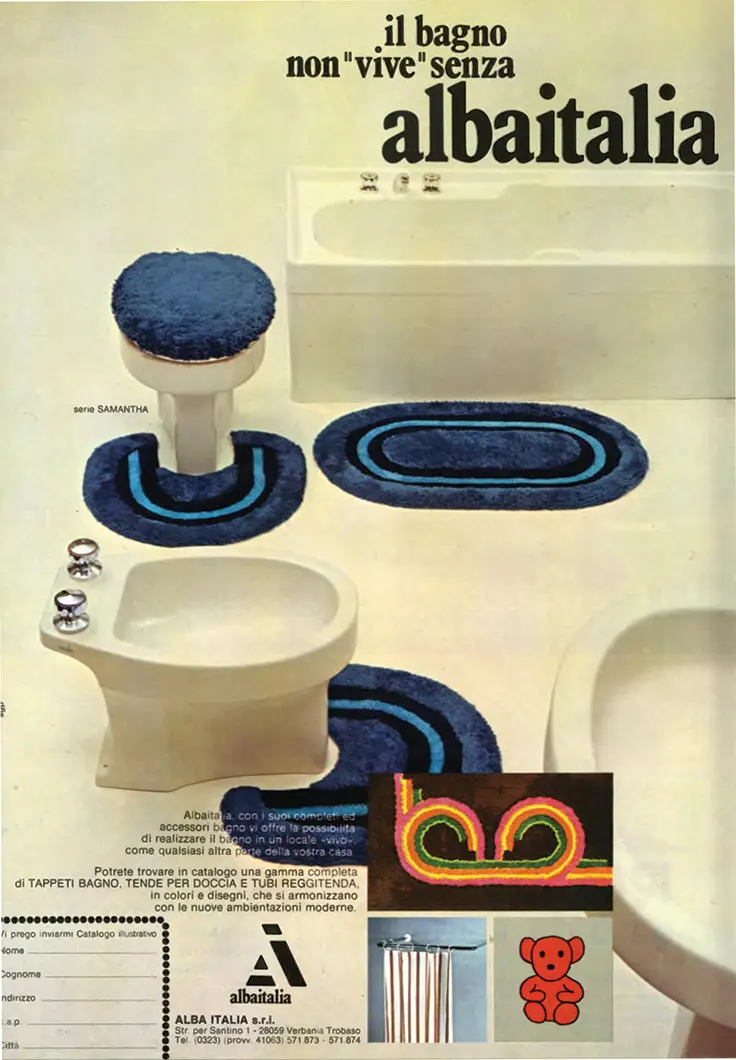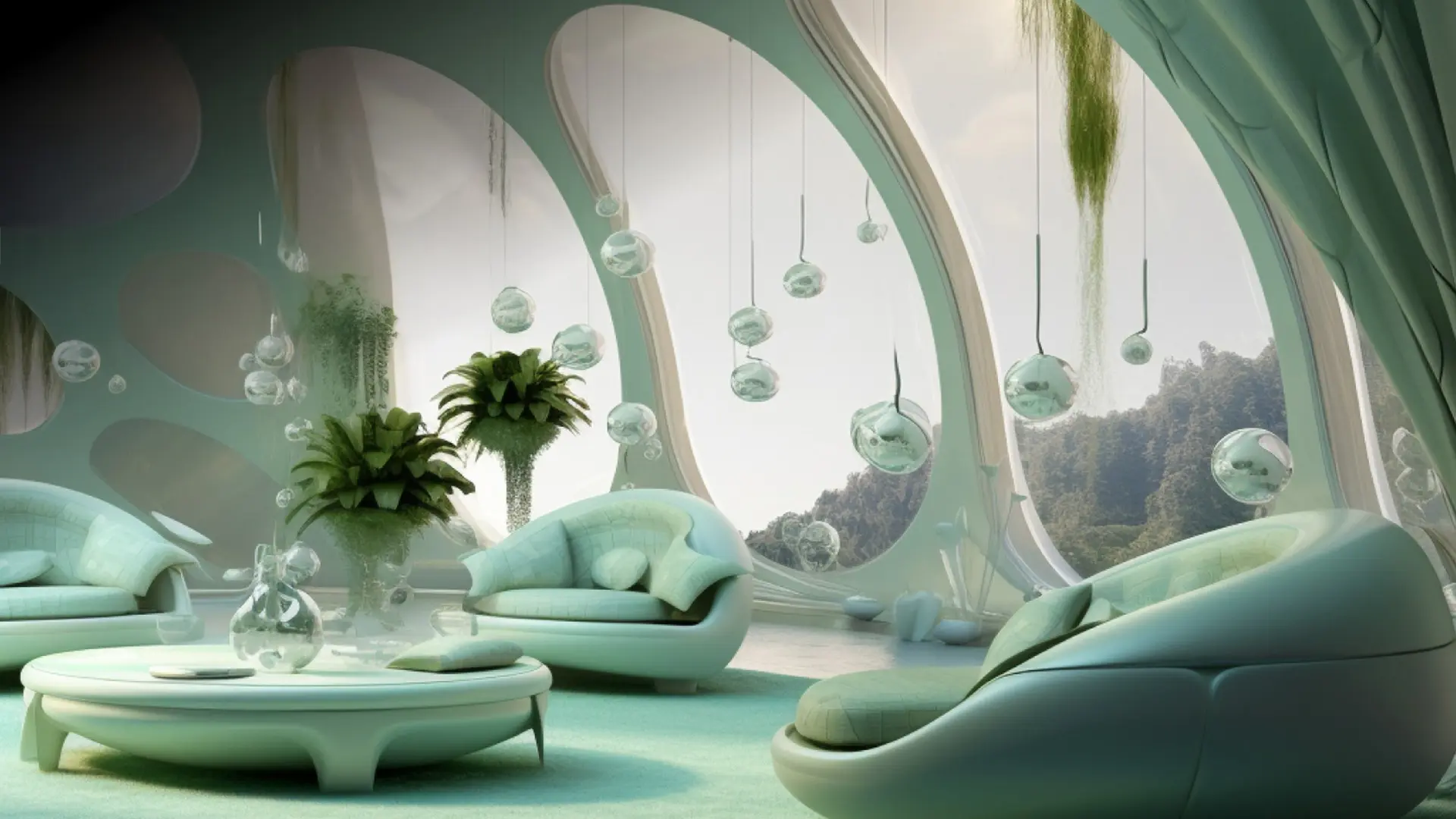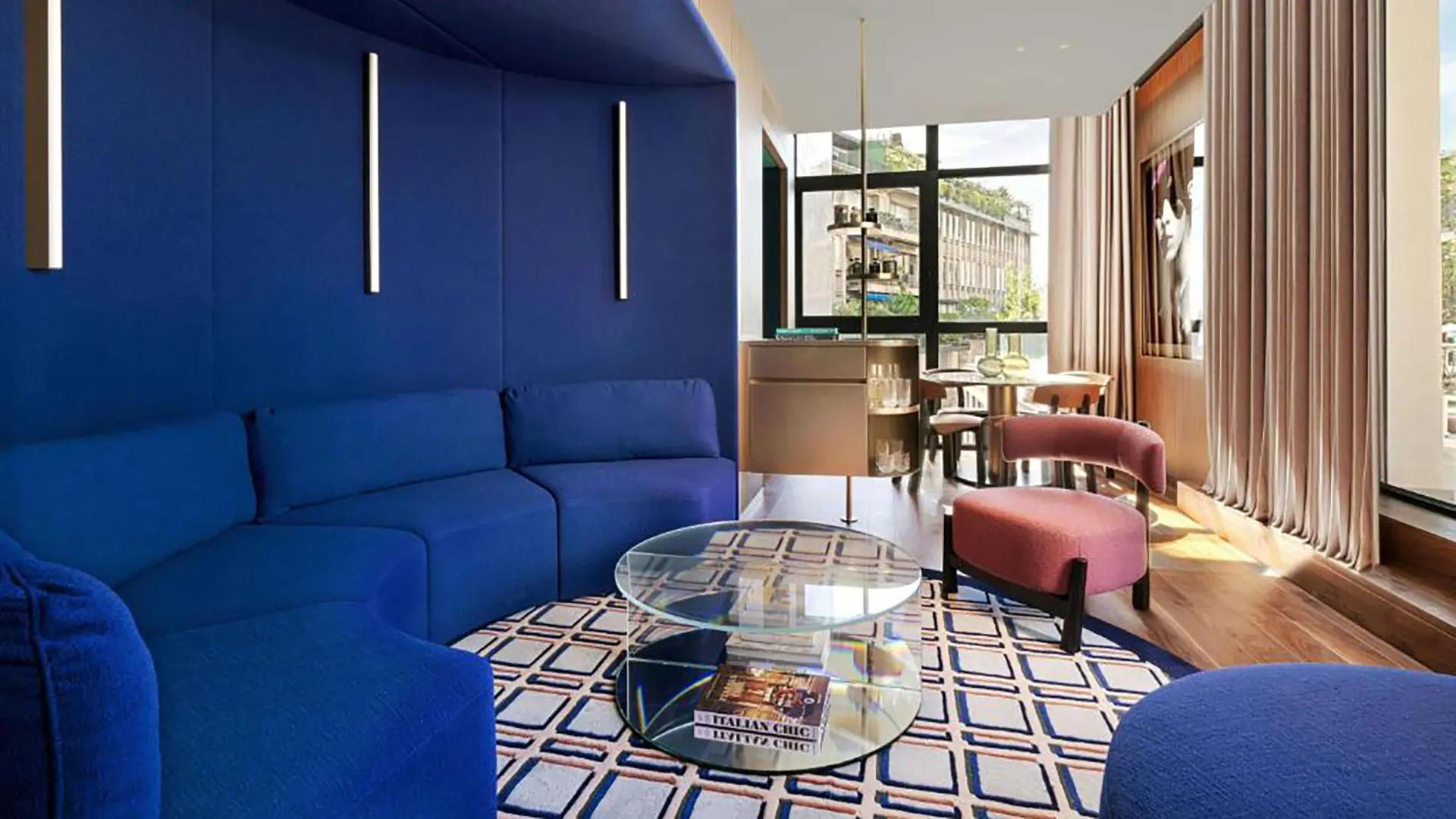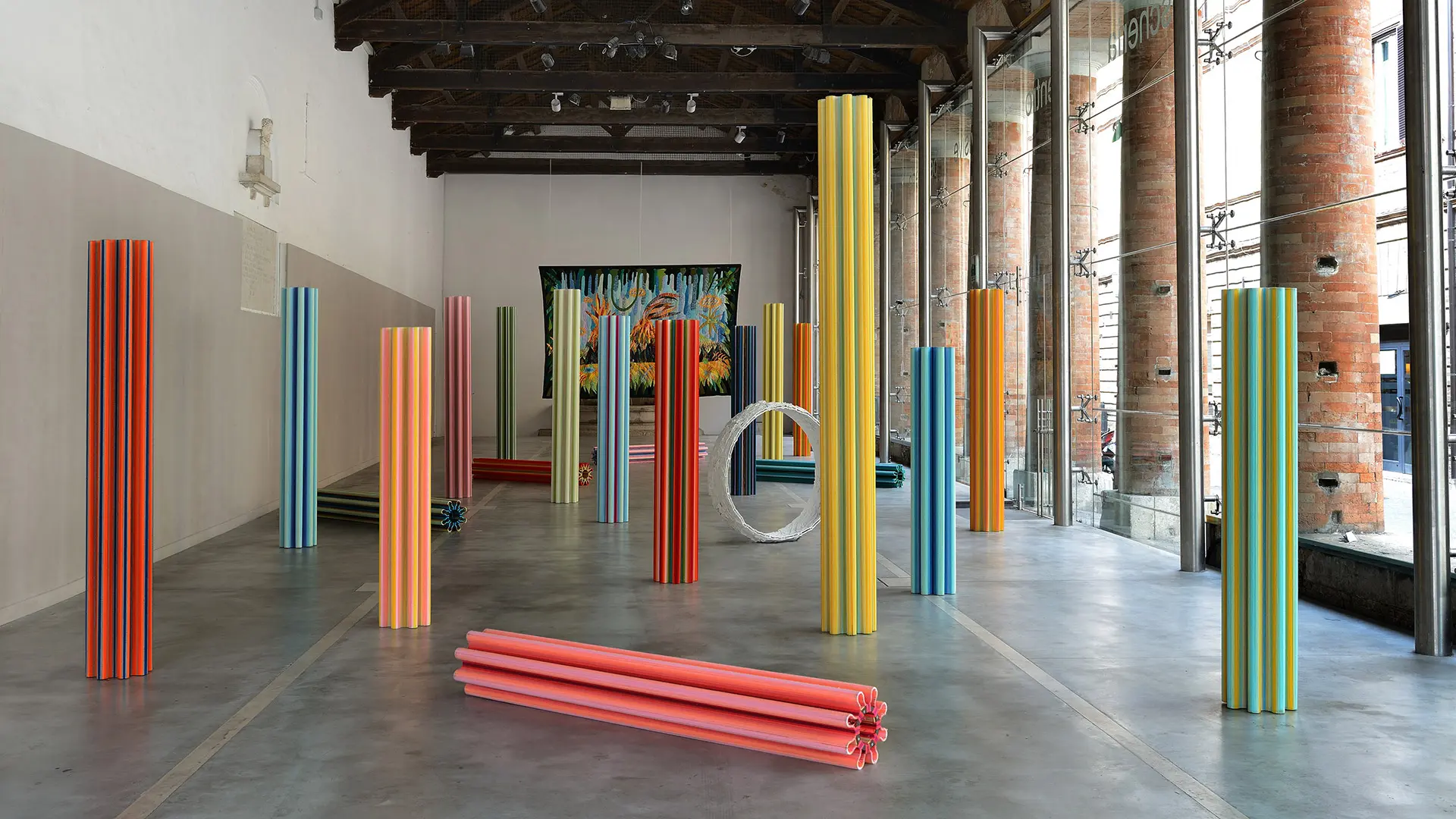From the Tokyo Design Awards, to the NY Product Design Awards & Architectural Design Awards, Best in Design, the NEB Trophy Design Competition, the Good Design Awards® and the Africa International Design Awards (AIDA), all the international news not to be missed in 2026
How the bathroom changed in the homes (and at the fairs)
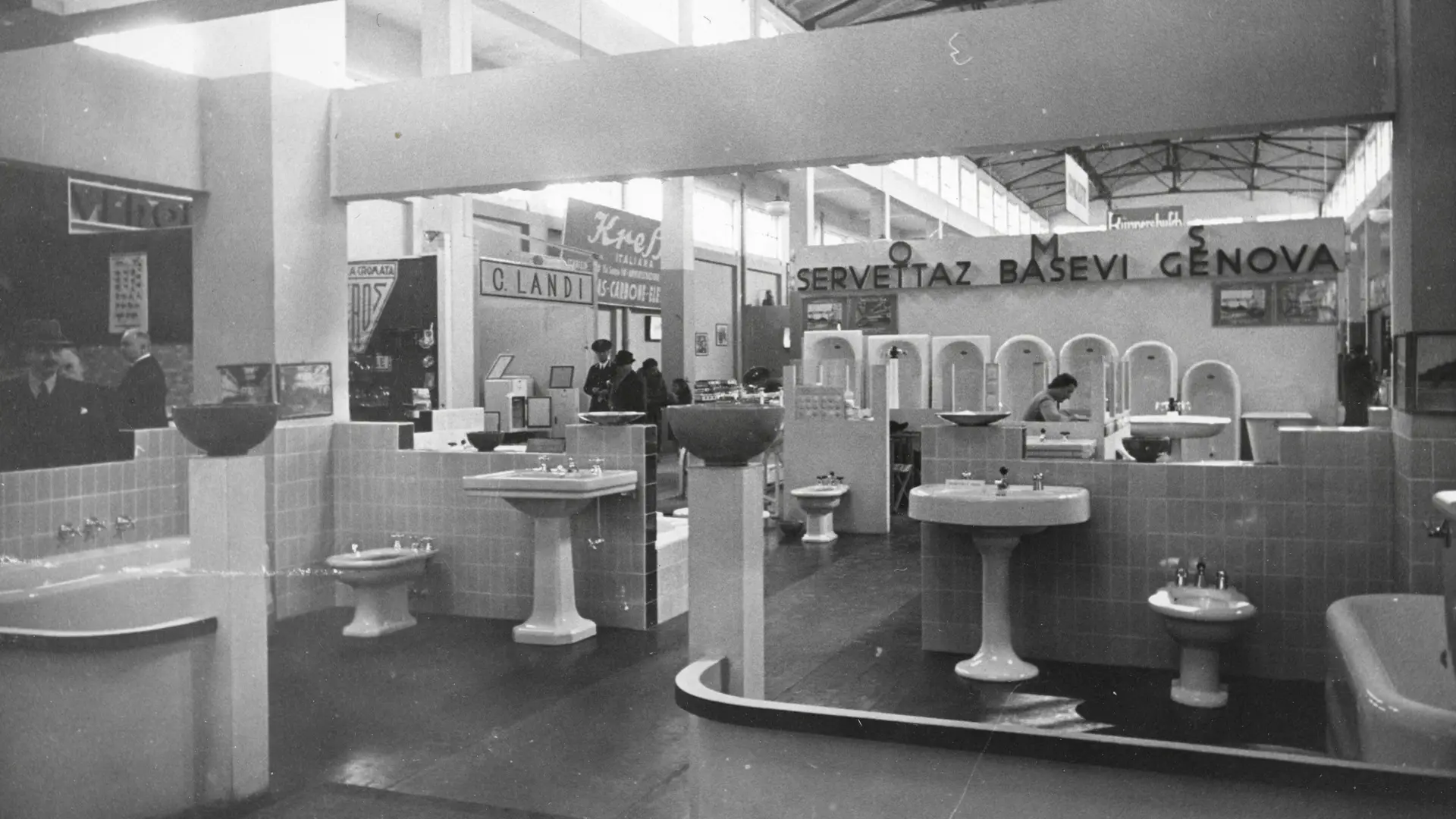
OMS-Servettaz Basevi’s bathroom furniture stand. Pavilion of the five galleries, Fiera Campionaria di Milano, 1941
The bathroom: a personal microcosm of products, accessories and amenities. In the run-up to the Salone del Mobile.Milano in June 2022, we continue our journey into the past with previously-unseen images from the Fondazione Fiera Milano Archives
My home is in a typical late-nineteenth/early-twentieth century Milan (and Turin)-style building known as a casa di ringhiera or ballatoio, containing small apartments with two outlooks. When they were originally built, a balcony running along one side led to a shared bathroom, long since incorporated into the apartments (with or without official approval).
From the toilet to the washhouse, common spaces were a sine qua non. Given that the home was part of the building’s community, there was little chance to keep soiled items out of view. Pure social housing, integration in its infancy, and above all, an antithesis of what today we believe to be our protective barrier – privacy – basically did not exist back then. And in my opinion, therein lay its beauty: oversight and voyeurism were overt in our lives, not hidden or concealed as they are today. The caretaker was the first human video camera; every window was a forerunner of the webcam, and that’s before even going to the bathroom, with all its shared noises, smells and timings!
Over the long haul, however, the bathroom would become a mini-Eden. Affluence and hygienic habits have made it possible for everyone to have their own bathroom at home today. The bathroom is not just a private room for the family and visitors to our microcosm, it is a space that has its own specific identity, accessories and all kinds of possible, sometimes almost unimaginable amenities.
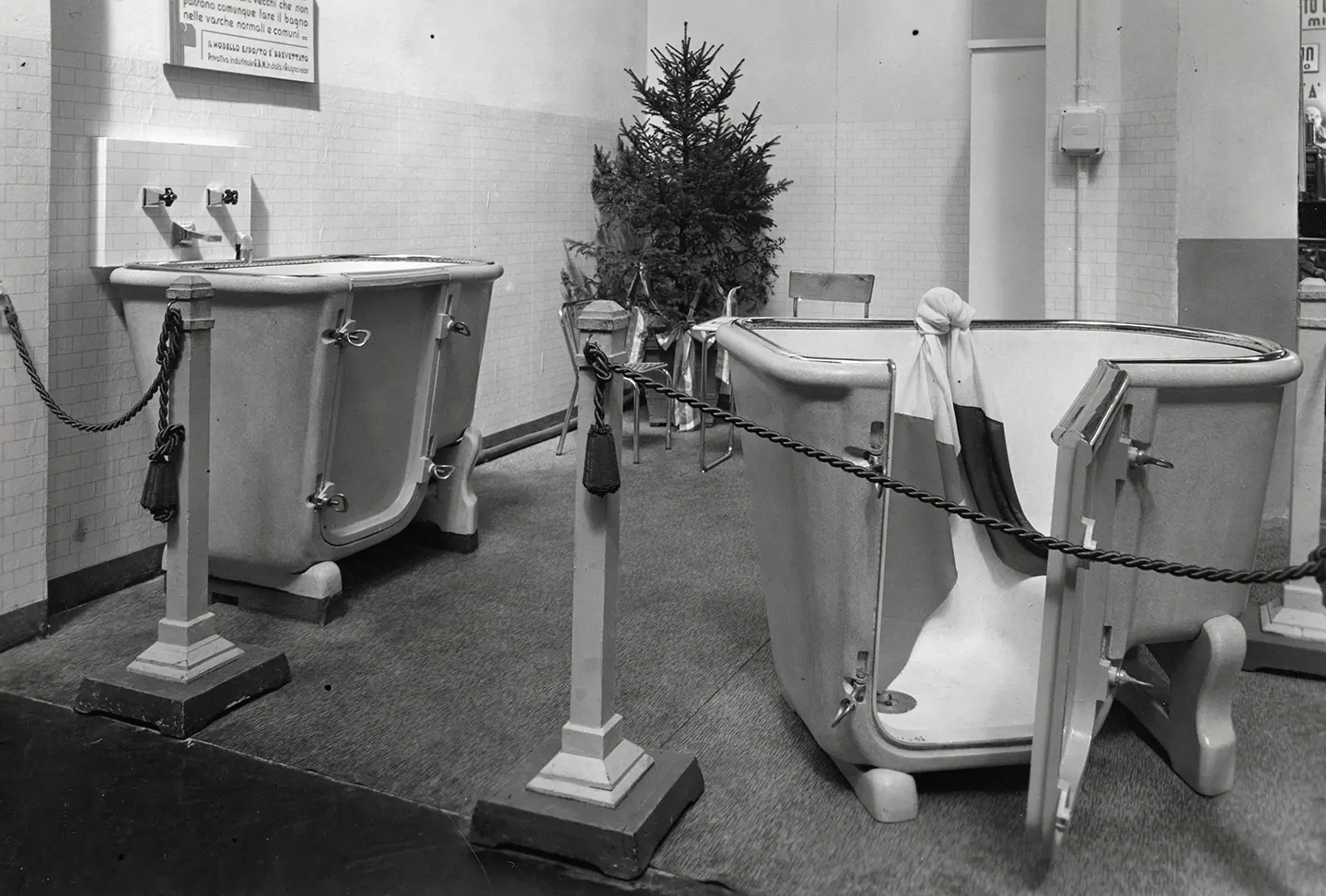
Stand of bathtubs. Medical-health exhibition at Fiera Campionaria di Milano, 1937
The bathroom has never stopped evolving since then. Behind its four walls, it has adopted increasingly reliable systems, created technically to last, incorporating anti-waste features or sustainable in other ways, driven by flourishing bathroom fittings companies that, to great success, have designed objects whose functions are known to all, while still being pleasant, ergonomic, colourful and durable.
The industry has had to rise to twin challenges. The first is an arc nobody ever wants to see descend: the three-element bathroom set, including a bidet, a French term that originally referred to a pony because we sit astride bidets to use them, much like riding a pony (rather than, given its size, a horse). The bidet is, however, a point of pride Italians proudly flaunt, a must-have in an Italian bathroom, where bathroom fixtures = sink, toilet and bidet, a kind of Trinity that, while less than Holy, has its own importance. If you visit some foreign hotel and find there us no bidet in the bathroom, as far as I’m concerned, that’s a massive fail!
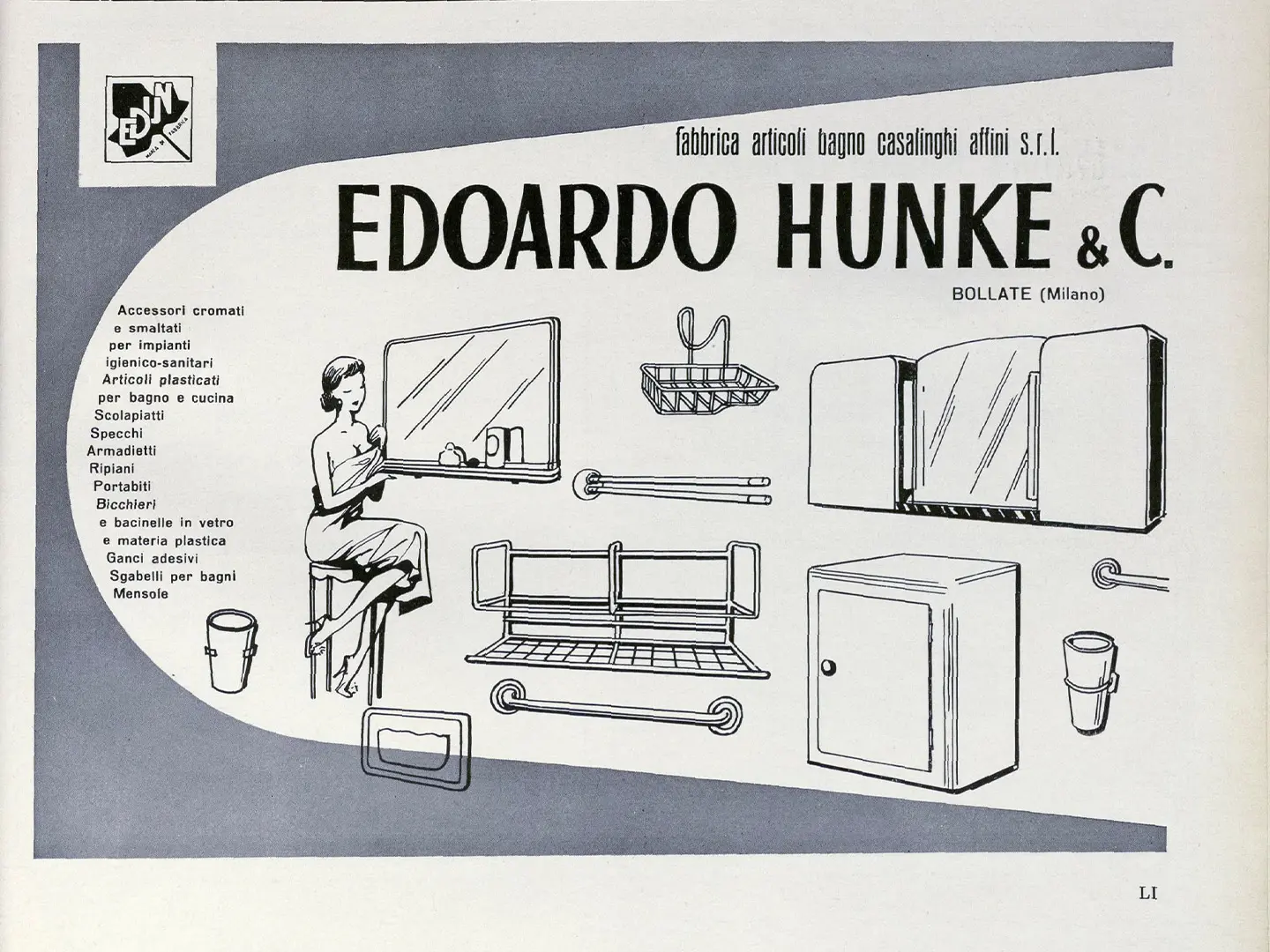
Fiera di Milano. Rassegna dell'Ente Autonomo Fiera. Year VIII. Single number 1956. Advertising for bathroom, household and similar items manufactured by Edoardo Hunke & C., Bollate (MI).
The second bathroom challenge is the eternal debate between shower and bathtub, a conversation you can often hear as Italians sip their early evening aperitif that goes something like, “Oh no, if I don’t pop into the shower in the morning, I’d never wake up,” or “you want to go home and take a nice bath with a glass of white wine and turn off your cell phone.” In big cities, the shower gets the nod purely for space reasons, but if you ask me, the real star is the bathtub. I’m lucky enough to have both in my single, two-window bathroom, making me something of an anomaly in Milan. Back when I was a kid, after going to scouts, a soak in the tub was ample reward for a day spent outside in short pants when it was just five degrees, or on Saturday nights a dip before sitting down to watch Scacciapensieri on the couch with a ham and cheese sandwich (eating dinner watching TV, yay!), my brothers and I in identical bathrobes, our still-damp hair neatly combed and freshly parted.
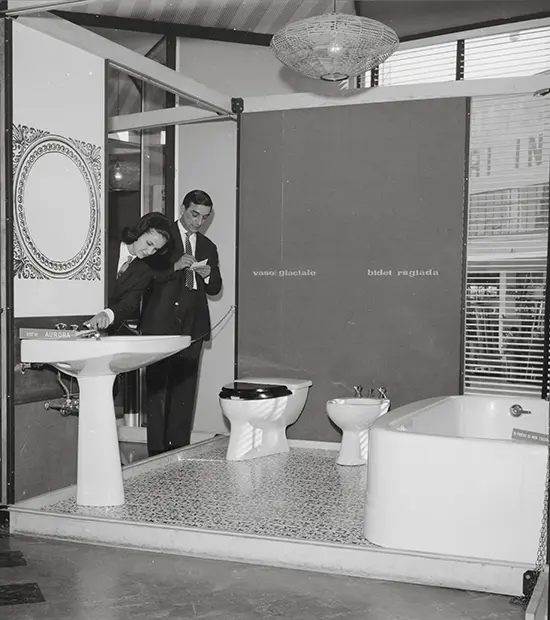
Manifattura Ceramica Pozzi Pavilion at Fiera Campionaria di Milano, 1962
The bathroom is an oasis of peace with a door and a key... No one should cross the threshold without permission or invitation. Even in the most open couples and families, the bathroom should remain a kind of Area 51: a zone for secret experimentation with outfits, make-up, a rehearsal room for karaoke singers… We are generally alone in the bathroom, our enjoyment there dependent on nobody interacting with us as we fix ourselves up, slap on some make-up, perhaps even brainstorm away from the molestations of noisy children, grandchildren, loud stereos and hoovers!
In my lifetime, I’ve seen many beguiling inventions and innovations come and go: whirlpool baths in all shapes and sizes, multijet showers, chromotherapy, toilets with improbable jets, music and perfume diffusers to help us relax when we want to, but for me, Topolino or the labels on the back of shampoo bottles are more than sufficient!
Check out the previews


 Exhibitions
Exhibitions
